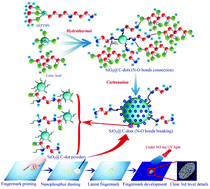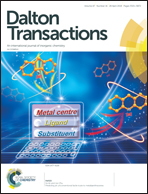A novel monodisperse SiO2@C-dot for the rapid and facile identification of latent fingermarks using self-quenching resistant solid-state fluorescence†
Abstract
Solid powder fluorescence shows great potential for application in medicine, biology, and engineering, especially in the identification of latent fingermarks in forensic science. However, conventional developing methods suffer from some drawbacks, such as low contrast, low sensitivity, low selectivity, and high toxicity. To conquer these challenges, novel SiO2@C-dot microspheres were prepared via a facile one-pot hydrothermal method by using citric acid as a carbon source and aminosilane as a nitrogen source. Interestingly, the results showed that the resultant powders possess good monodispersity, high fluorescence emission, and resistance to self-quenching. Additionally, the mechanism for the solid-state fluorescence of SiO2@C-dot compounds was also investigated. More importantly, the fingermarks on various surfaces, including transparent glasses, ceramic tiles, transparent plastics, aluminum alloys, plastic cards, painted woods, artificial leathers, and Chinese paper money, developed by the powders have indicated well-defined papillary ridges under a 365 nm UV lamp. The novel strategy of using monodisperse SiO2@C-dot microspheres as a fluorescent label for developing latent fingermarks showed greater advantages compared to conventional methods, which was also demonstrated using the automatic fingerprint identification system. It is simple, rapid, low-cost, nontoxic, and effective, and is expected to be a promising alternative for the development of latent fingerprints in forensic science.



 Please wait while we load your content...
Please wait while we load your content...